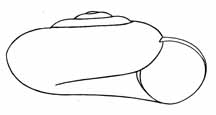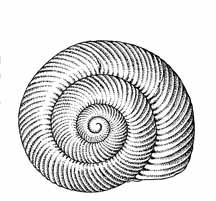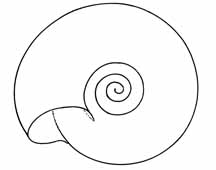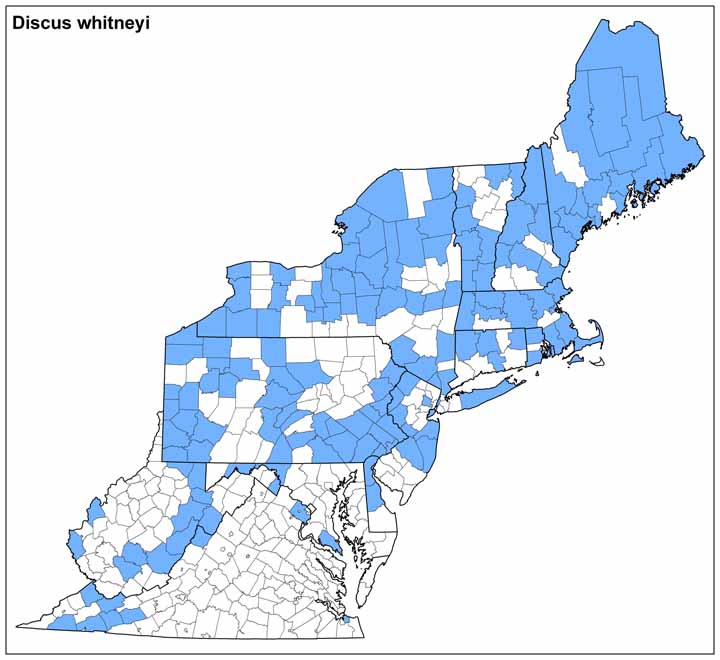Land Snails
.jpg)
.jpg)
--top.jpg)
Photo(s): Three views of a Discus whitneyi shell, © Jeff Nekola.



Illustrations © Kathy Schmidt from her series "Land Snails of New York State."
Click photo(s) to enlarge.
Discus whitneyi (Newcomb, 1864)
Family: Discidae
Common name: Forest Disc
Identification
Width: 5.0-6.7 mm
Height: 2.7-3.6 mm
Whorls: 4
The body whorl and aperture of this disk’s shell are quite round, and the apex is mildly convex. The umbilicus is open and, though not particularly wide, does show all the whorls. Radial ribs adorn this shell’s surface. Discus whitneyi and D. catskillensis are similar and are considered by some authors to be "transitional" to each other (e.g. Pilsbry, 1948).
Ecology
Discus whitneyi likes moisture and is often found in springs, seeps, or large wetlands. It can also be found in low-lying meadows, roadsides, and near marshes, or even in urban areas. Its distribution at the local scale can be quite disjunct or patchy.
Taxonomy
Synonyms for D. whitneyi are D. cronkhitei, D. cronkhitei anthonyi, D. cronkhitei cronkhitei, Helix cronkhitei, H. striatella, Gonyodiscus cronkhitei, G. cronkhitei, Patula striatella, P. striatella form albina, Pyramidula cronkhitei, P. cronkhitei anthonyi, P. striatella var. alba, and P. striatella var. albino. Nekola (2008) suggests that the appropriate specific epithet should be "cronkhitei."
Distribution
Discus whitneyi occurs all through the north-central and north-eastern parts of the United States and into Canada. It shows up in western Virginia and in the south-western corner of the state.
Conservation
NatureServe Global Rank: G5
Greg Kimber, Ken Hotopp 7/2012
Range Map (click to enlarge)


